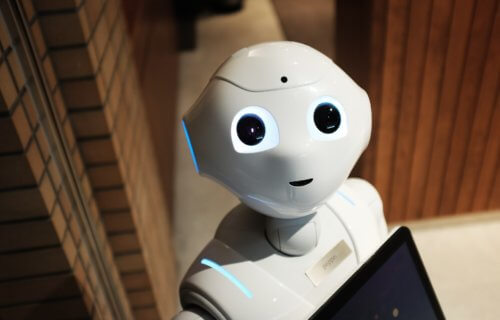KYOTO, Japan — What’s so funny? Researchers at Kyoto University say they’re trying to create more natural conversation between robots and people by developing an artificial intelligence (AI) system which picks apart the complex art of human laughter.
The researchers say empathy is the key to coaxing out natural conversational cues and laughter between both humans and robots. The Kyoto University School of Informatics study, published in Frontiers in Robotics and AI, shows how a “shared laughter” AI system was created to cull out a sense of humor from an astoundingly life-like Japanese android named “Erica.” The system detects laughter, then decides whether to laugh, and then finally has Erika produce the most appropriate type of laughter.
The Kyoto researchers reiterated that the complex factors underlying comedy, laughter, and why something is funny are incredibly nebulous and hard to pin down with scientific methods. However, they noted that empathy is likely the key to smoothing over conversation and comedic timing.
“We think that one of the important functions of conversational AI is empathy,” says lead author Dr. Koji Inoue, an assistant professor in Kyoto’s Department of Intelligence Science and Technology, within the Graduate School of Informatics, in a university release. “Conversation is, of course, multimodal, not just responding correctly. So we decided that one way a robot can empathize with users is to share their laughter, which you cannot do with a text-based chatbot.”
It could take 20 years before robots can chat normally with you
The informatics team compiled 80 different dialogues which humans have on a regular basis. They used nuanced conversational scenarios – which included speed dating, party mingling, and brief one-on-one chats – to test if the robots would appropriately laugh at the jokes or sarcasm of their human counterparts.
The team tested Erika’s ability to engage, react, and ultimately choose the right audible laugh as she listened in on dialogues from 130 people. Researchers tested the humor scenarios under three conditions: shared laughter AI, conversations with zero laughter, and conversations which were entirely laughter. The shared-laugh system out-performed all the rest.
“The most significant result of this paper is that we have shown how we can combine all three of these tasks into one robot. We believe that this type of combined system is necessary for proper laughing behavior, not simply just detecting a laugh and responding to it,” Inoue says.
One of the struggles of the study is that humans – who are emotional and multilayered beings – are often feigning humor or feelings.
“Our biggest challenge in this work was identifying the actual cases of shared laughter, which isn’t easy, because as you know, most laughter is actually not shared at all,” Inoue continues. “We had to carefully categorize exactly which laughs we could use for our analysis and not just assume that any laugh can be responded to.”
“Robots should actually have a distinct character, and we think that they can show this through their conversational behaviors, such as laughing, eye gaze, gestures and speaking style,” the study author concludes. “We do not think this is an easy problem at all, and it may well take more than 10 to 20 years before we can finally have a casual chat with a robot like we would with a friend.”
